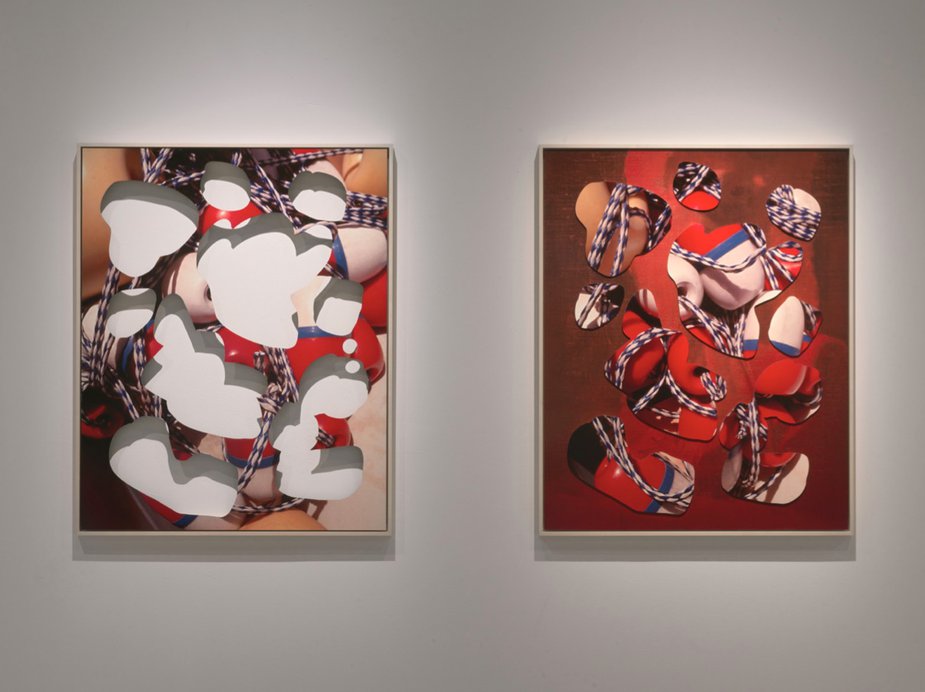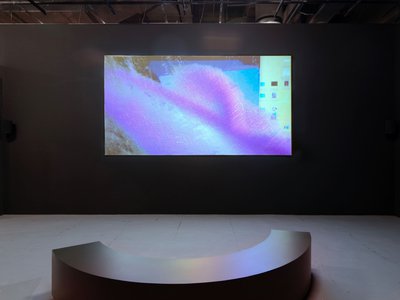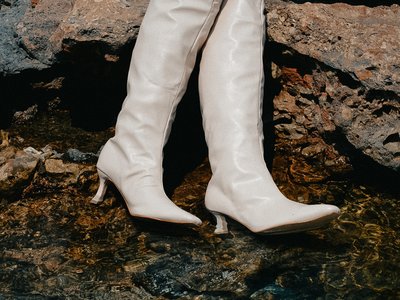Charlotte Cotton:
I want to start by touching upon the timeline of your photographic practice, which spans quite an epic period in photography’s story. A brief summary in rough chronological order, starting in the mid-2000s includes the almost wholesale shift from photographic film to digital image capture; Photoshop becoming an artistic medium in its own right; Web 2.0 and the circulation of images; the rapid ascendance of social media platforms; development of new printing and 3D imaging technologies. Looking back, how much of this radical shift in photographic processes informed your artistic choices?
Kate Steciw:
It was quite by accident that I found myself working with software and screens. I had student debt and found myself working as a lab assistant in a high-end retouching studio in 2004. I was surrounded by computers, other people’s images and my own growing archive of images captured on my camera phone so I learned to work with what I had immediately available to me. The financial, temporal and technological restrictions I faced when I graduated from SAIC [School of the Art Institute of Chicago], were exactly what led me to the work I make now. I naturalized desktop software because I had no studio and no camera of my own. Because I was physically unable to make the work I wanted to make, I played and made marks and sent funny images to friends and before long, something more serious and substantive started to happen. It was never my goal or my intent to make work like this – just a byproduct of boredom, curiosity and the basic impulse to make something...anything. I have a lot of faith in that impulse both in myself and others. Photography and its derivative practices are such a convenient and fertile place for contemporary humans to connect with that impulse. If you have a phone, not only can you make a ‘thing’ but you can also share it with whomever you like instantaneously which is really the point at the end of the day – to share.
Charlotte Cotton:
You have used images you found online as a main ‘source’ for your works and in the exhibition text, I quote your definition of the use-value of the ubiquitous JPEG image file format as, 'not a tool of precision but rather of subjective storytelling'. First and foremost, you are categorizing JPEGs as a medium, and one that is loaded with meaning and narrative - the social system of which is determined by the vast field of networked images. I like the way that you directly link the default format for image files with a 'subjective' creative space. How did you get to that space?
Kate Steciw:
At a certain point in my experience, JPEGs separated from what could be traditionally thought of as a photograph. An analogue photographic negative is – as an objective record of a chemical interaction – fixed. I think the fact that a JPEG is in a process of destruction without a referential ‘original’ is very interesting. The JPEG is a default system of compression (a stream of bytes) rather than an image itself (which is lost to us in instantaneous compression). At the time, JPEGs and other compression protocols were the unavoidable default output of most consumer-grade image capture technology. So, there was this byproduct of an image, a versioning of the 'original' built into our experience of images and the expectation of online dissemination of ‘image-artifacts’ that would be altered with each subsequent compression. The JPEG carries certain aesthetic markers that tell the story of its own journey through networked space. In recent years, I have been increasingly interested in incorporating these markers as aesthetic choices in the works. Rather than try to obscure these attributes, I treat resolution and compression much in the same way a painter would consider viscosity, flow or opacity as properties of a the medium.


